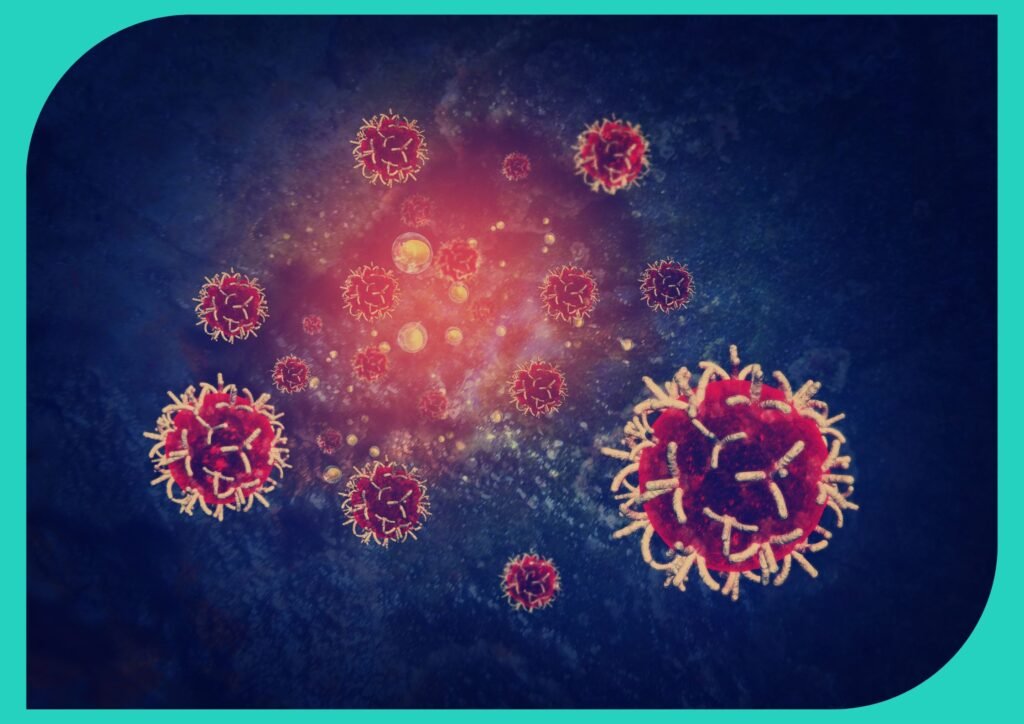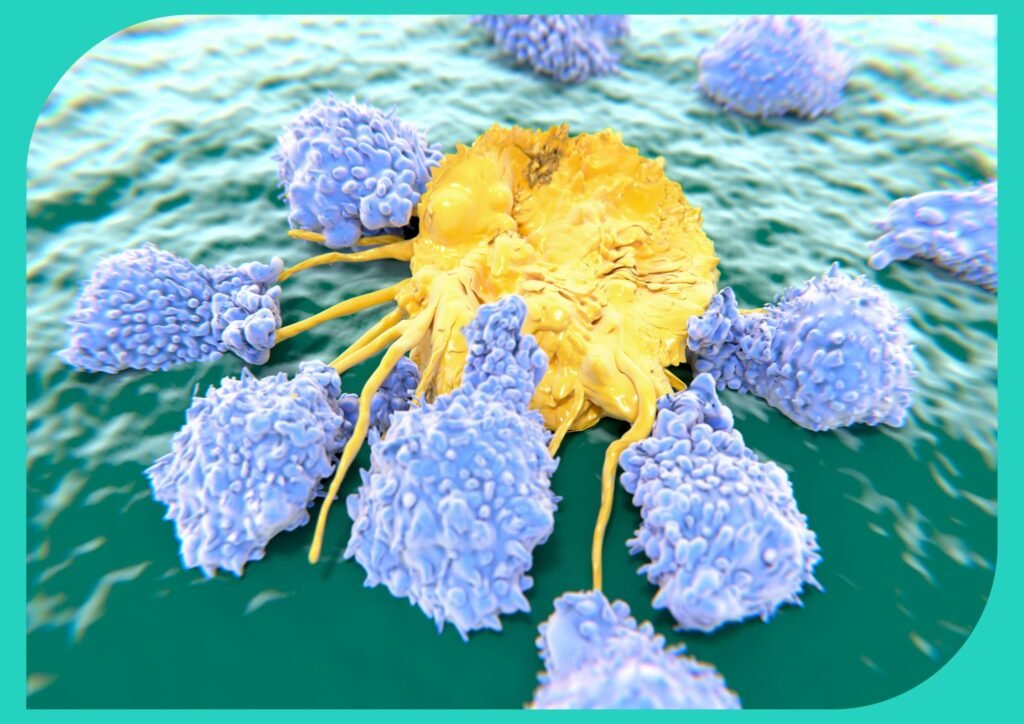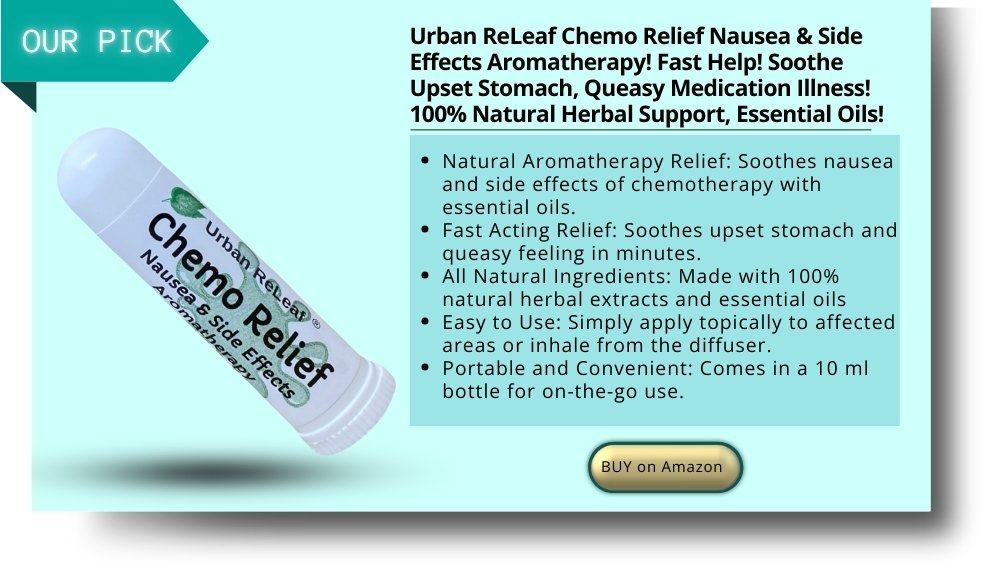Ever heard of “click chemistry”? It might sound like a newfangled gadget or a TV remote with extra buttons. But it’s actually a fascinating area of science that’s making waves, especially in how we think about health and aging.
Exploring the Pinnacle of Medical Innovations
The medical industry is constantly evolving, with new innovations and technologies emerging on a regular basis. From wearable devices that monitor vital signs to groundbreaking treatments for previously incurable diseases, the possibilities for advancing medical care seem endless.
As healthcare providers strive for innovation, it is crucial to examine the forefront of medical advancements. Cancer affects lots of people everywhere and scientists have been studying it for a long time. But here’s some good news: they keep finding new and cool ways to fight it.
One awesome way is by using something called “click chemistry” to make a treatment that works against cancer. Click chemistry is like a tool that scientists use to create powerful treatments.
Prefer to listen rather than read?

Understanding the Basics of Cancer
Before diving in, let’s briefly understand what cancer is. Cancer is a group of diseases characterized by the uncontrolled growth and spread of abnormal cells. Historically, treatments included surgery, radiation, and chemotherapy.
Medical advancements have led to more targeted approaches like immunotherapy, which harnesses the body’s immune system, and precision medicine, which tailors treatment to individual patients based on their specific cancer’s genetic makeup.
These advancements have significantly improved survival rates and quality of life for many cancer patients.
So, What Exactly Is Click Chemistry?
Imagine you’re building with LEGOs. You have different kinds of blocks, and they snap together easily and securely, right? That’s kind of what click chemistry is like, but with molecules! In the world of chemistry, scientists are always looking for ways to build molecules quickly and reliably. Click chemistry is a set of reactions that are like those LEGO blocks:
- Easy to use: The reactions are simple and don’t need complicated conditions.
- Fast: They happen quickly, like snapping those LEGOs.
- Efficient: They produce very few unwanted byproducts, so there’s less waste.
- Selective: They “click” together exactly where you want them to, like fitting the right LEGO pieces.
One of the most common and useful click reactions is the copper-catalyzed azide-alkyne cycloaddition (CuAAC). Don’t worry about the big words! Just remember that it’s a way to join two specific types of molecules (azides and alkynes) with the help of a bit of copper.

Why Should Seniors Care About Tiny Molecular LEGOs?
You might be wondering, “Okay, that’s great for chemists, but what does it have to do with me?” Well, click chemistry has some exciting potential applications that could be particularly beneficial for seniors:
Smarter Drug Delivery
As we get older, our bodies may not absorb medications as efficiently as they used to. This can lead to a variety of challenges, including the need for higher doses, increased risk of side effects, and reduced effectiveness of treatment. Click chemistry offers a powerful toolkit for creating targeted drug delivery systems that can address these challenges.
Imagine tiny, precisely engineered capsules, constructed using click chemistry, that can carry medicine directly to the cells or tissues that need it most. These “smart” delivery systems can navigate the complexities of the human body to release their therapeutic payload with remarkable accuracy. This approach offers several potential advantages:
- Lower doses
- By delivering the drug directly to the site of action, we can minimize the amount of medication required. This is particularly important for seniors, who may be more susceptible to the adverse effects of high drug concentrations. Lower doses can translate to a reduced burden on the liver and kidneys, decreasing the risk of complications and improving overall tolerability.
- Fewer side effects
- Traditional drug delivery methods often involve distributing the medication throughout the body, which can lead to off-target effects and unwanted side effects. Click chemistry-based delivery systems can be designed to target specific cells, such as cancer cells or inflamed tissues, thereby minimizing exposure to healthy cells and reducing the likelihood of side effects. This can significantly improve the patient’s quality of life and adherence to treatment regimens.
- Improved effectiveness
- When a drug is delivered precisely to its target, it can exert its therapeutic effect more efficiently. This can lead to better treatment outcomes, even at lower doses. For example, in the treatment of cancer, targeted drug delivery can enhance the destruction of tumor cells while sparing healthy tissues, leading to improved survival rates and reduced morbidity.

Click chemistry’s versatility allows scientists to create a wide range of drug delivery systems, each tailored to specific therapeutic needs. Some examples include:
- Nanoparticles
- Click chemistry can be used to synthesize nanoparticles with precisely controlled size, shape, and surface properties. These nanoparticles can be loaded with drugs and functionalized with targeting ligands that recognize specific receptors on the surface of target cells. This allows for highly selective drug delivery and enhanced cellular uptake.
- Antibody-drug conjugates (ADCs)
- ADCs are a class of targeted therapeutics that combine the specificity of antibodies with the potency of cytotoxic drugs. Click chemistry provides a robust and efficient method for attaching the drug to the antibody, ensuring that the drug is delivered directly to the target cell. This approach has shown great promise in the treatment of various cancers.
- Dendrimers
- Dendrimers are highly branched, tree-like molecules with a well-defined structure. Click chemistry can be used to attach drug molecules to the surface of dendrimers, creating a multi-valent drug delivery system with enhanced targeting capabilities. Dendrimers can also be designed to release the drug in a controlled manner, further improving therapeutic efficacy.
- Liposomes
- Liposomes are spherical vesicles composed of a lipid bilayer. Click chemistry can be employed to modify the surface of liposomes with targeting ligands or to encapsulate drugs within the liposome interior. This allows for improved drug stability, enhanced circulation time, and targeted delivery to specific tissues.
Specifically, click chemistry is being used to develop new and improved ways to deliver drugs for a variety of conditions that commonly affect seniors:
- Arthritis:
- Click chemistry enables the design of drug delivery systems that specifically target inflamed joints, providing localized relief from pain and inflammation. This can help to improve mobility and reduce the need for systemic pain medications, which can have significant side effects.
- Cancer
- Click chemistry is playing a crucial role in the development of next-generation cancer therapies. By delivering chemotherapy drugs directly to tumor cells, click chemistry can minimize damage to healthy tissues, reducing the debilitating side effects associated with traditional chemotherapy. This can lead to improved treatment outcomes and a better quality of life for cancer patients.
- Cardiovascular disease
- Click chemistry is being utilized to create targeted therapies for various cardiovascular conditions, such as atherosclerosis and heart failure. These therapies can deliver drugs or therapeutic agents directly to damaged blood vessels or heart tissue, promoting healing and preventing further damage.
The development of these advanced drug delivery systems holds immense promise for improving the health and well-being of seniors. By enabling more precise and effective drug delivery, click chemistry can help to reduce the burden of age-related diseases, minimize side effects, and enhance the overall quality of life. As research in this field continues to advance, we can expect even more innovative and life-changing applications to emerge in the future.
The Joint Venture: UCL and Stanford University
Researchers at UCL and Stanford University have been the masterminds behind this innovation. They utilized click chemistry and crafted a unique anti-cancer therapy that has the potential to redefine cancer treatments.
Two Americans and a Danish scientist won the Nobel Prize in Chemistry for discovering click chemistry. Carolyn Bertozzi of Stanford University and Barry Sharpless of Scripps Research both work in California. The third scientist, Morten Meldal, is from the University of Copenhagen.
Sharpless invented the concept of click chemistry about 20 years ago while trying to make the production of new molecules simpler and more reliable. Soon afterwards, he and Meldal came up with a specific reaction using click chemistry technology.

Then Bertozzi took click chemistry to a new level. She discovered how to make click chemistry work inside living organisms without disrupting their own chemical activities.
“I’m absolutely stunned,” Bertozzi said after the Nobel Committee called her with the news that she had won the prize. She said she hoped chemical biology would benefit from the award. “The attention that the Nobel Prize brings can be incredibly energising.”
The dedicated click chemistry researchers accomplished groundbreaking advances by crafting a sophisticated anti-cancer therapy comprising three crucial components. Firstly, they developed a specialized molecule aimed at precisely targeting cancer cells.
Secondly, they engineered a mechanism to recruit potent T cells, a type of white blood cell, to launch a targeted attack against these malignant cells. Lastly, the therapy was ingeniously designed to disrupt and weaken the cancer cell’s defense mechanisms.

This innovative approach showcases the power of click chemistry in orchestrating a precise and multifaceted attack on cancer. By seamlessly integrating these three components, the therapy exhibits exceptional efficacy and selectivity, while minimizing damage to healthy cells.
The successful implementation of this cutting-edge anti-cancer therapy highlights the transformative potential of click chemistry in advancing precision medicine and redefining the landscape of cancer treatment.
As scientists continue to push the boundaries of this field, we can anticipate even more remarkable breakthroughs, bringing us closer to a future where cancer becomes a conquerable challenge.
Molecules Clicking Together: LEGO Bricks Analogy
Envision the therapeutic molecules as interlocking LEGO bricks, seamlessly assembling to target cancer cells with remarkable precision. When combined, these molecular “bricks” form a potent and efficient therapeutic agent, strategically minimizing harm to healthy cells and mitigating adverse side effects.
This innovative approach, akin to building a customized therapeutic structure, exemplifies the immense potential of precision medicine in revolutionizing cancer treatment.
Jon Lorsch, the director of the US National Institute of General Medical Science, also likes to compare click chemistry with Lego Bricks. “It allows you to assemble molecules in a fairly defined way, such that you can direct what’s attached to what easily.” Dr. Lorsch says. “Almost anything you look at these days, you can find an example of where this chemistry has been applied.”
By harnessing the power of these molecular LEGO-like connections, scientists are advancing towards a future where cancer therapies are not only more effective but also more tailored and gentle on the patient’s well-being.
Functioning of the New Anti-Cancer Therapy
The therapy operates by precisely delivering a lethal payload exclusively to cancer cells, leaving healthy cells unharmed. This groundbreaking approach significantly enhances the therapeutic index, providing us with a formidable weapon in the battle against cancer.
The targeted delivery of the deadly payload ensures that the treatment focuses its full force on eradicating cancer cells while sparing surrounding healthy tissues. This tremendous advancement not only increases the therapy’s effectiveness but also minimizes potential side effects, thereby offering new hope and better outcomes for cancer patients.
The therapeutic precision achieved through this approach represents a paradigm shift in cancer treatment, unlocking the potential for more successful and well-tolerated therapies in the fight against this devastating disease.
Implications of the New Therapy
So, what does this breakthrough mean for cancer treatment?
Overcoming Current Treatment Limitations
In contrast to current cancer therapies that often cause harm to healthy cells and result in debilitating side effects, this innovative therapy is designed with a specific focus on minimizing such adverse consequences. This breakthrough technique holds the promise of significantly reducing side effects, offering a more patient-friendly and tolerable treatment option for individuals battling cancer.
As researchers continue to refine and expand this approach, it represents a crucial step forward in the pursuit of more effective and compassionate cancer treatments, fostering hope for improved quality of life for cancer patients worldwide.
Potential Impact on Cancer Patients’ Life Quality
In the long run, this therapy can significantly enhance the quality of life of cancer patients. This transformative approach holds the promise of making the treatment journey for cancer patients less physically and emotionally taxing, alleviating the burden of debilitating side effects that often accompany conventional therapies.
Imagine a future cancer treatment process that eliminates the common side effects like hair loss, nausea, and fatigue – a prospect filled with hope and promise thanks to this groundbreaking therapy. Patients can look forward to a more comfortable and compassionate experience, allowing them to maintain a higher quality of life throughout their treatment.
As researchers continue to advance this transformative therapy, we move closer to a future where cancer treatments are not only more effective but also gentler, offering renewed optimism for patients and their families in the fight against cancer.

Prolonging Life Expectancy
With its increased efficiency and reduced harm to healthy cells, this promising therapy holds the potential to extend patients’ life expectancy, marking a significant ray of hope in cancer treatment. By precisely targeting cancer cells and minimizing side effects, the therapy may allow patients to endure more prolonged and effective treatment regimens, enhancing their chances of successful outcomes and improved survival rates.
This development represents a critical milestone in the ongoing battle against cancer, offering renewed hope and optimism for patients and their loved ones.
Challenges and Prospects of the New Therapy
As with any revolutionary innovation, this therapy encounters its fair share of challenges and skepticism. However, through rigorous testing and continuous refinement, it holds the potential for a bright and promising future in the fight against cancer.
The road to acceptance and widespread adoption may be met with questions and doubts, but scientific scrutiny and evidence-based advancements will pave the way for greater confidence in this transformative approach.
By addressing concerns, fine-tuning the technology, and bolstering clinical data, researchers can build a strong foundation of evidence supporting the therapy’s effectiveness and safety. With each milestone achieved, the therapy gains credibility, opening doors for more extensive use and integration into standard cancer treatment protocols.
As this innovative approach perseveres through scrutiny and skepticism, it has the potential to revolutionize cancer treatment, offering new hope and better outcomes for countless patients worldwide.
By embracing challenges as opportunities for growth, this therapy continues its journey towards a future where cancer becomes a conquerable adversary, sparing countless lives from the grips of this devastating disease.

Conclusion: A Hopeful Future in Cancer Treatment
In conclusion, the revolutionary anti-cancer therapy, forged through the power of click chemistry, paints a hopeful and promising picture for the future of cancer treatments. Its precision targeting and reduced side effects offer cancer patients the prospect of improved quality of life during treatment.
This transformative approach represents a significant leap forward in the battle against cancer, shifting the paradigm from blunt force to surgical precision. Just as a skilled surgeon wields a scalpel to precisely remove a tumour, this therapy aims to combat cancer with finesse and accuracy, sparing healthy cells from unnecessary harm.
With this groundbreaking advancement, we move closer to a future where cancer can be conquered with precision and compassion, granting patients a chance at a brighter and healthier tomorrow.
Disclaimer
The content provided on MySeniors.World is for informational purposes only and is not intended as either financial or medical advice. Always consult a qualified professional before making any investment or health-related decisions.
Posts may contain affiliate links, meaning we earn a commission – at no additional cost to you, if you click through and make a purchase. Your support helps us continue providing valuable content.



















